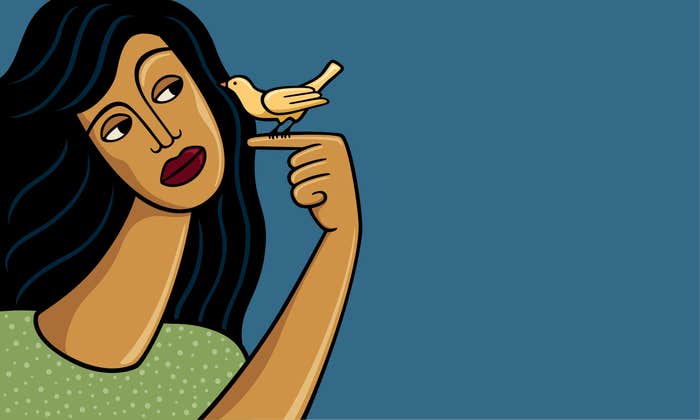Before our evolutionary ancestors had a brain—before they had any organs—18 different cell types got together to make a sea sponge. Remarkably, some of these cells had many of the genes needed to make a brain, even though the sponge has neither neurons nor a brain.
In my neuroscience lab at the University of California, Santa Barbara, my colleagues and collaborators discovered this large repository of brain genes in the sponge. Ever since, we have asked ourselves why this ancient, porous blob of cells would contain a set of neural genes in the absence of a nervous system? What was evolution up to?
The sea sponge first shows up in the fossil record about 600 million years ago. They live at the bottom of the ocean and are immobile, passive feeders. In fact, early biologists thought they were plants. Often encased by a hard exterior, a row of cells borders a watery center. Each cell has a tiny cilium that gently circulates a rich flow of microorganisms on which they feed.
This seemingly simple organization belies a giant step in evolution. For the previous 3 billion years, single-celled creatures inhabited the planet. In one of evolution’s most creative acts, independent cells joined together, first into a colony and later into a truly inseparable multicellular organism.
Why did this porous blob of cells contain neural genes? What was evolution up to?
Colonies of single cells offered the first inkling that not every cell in the colony had to be identical. Cells in the interior might differ subtly from those on the periphery that are subject to the whims of the environment. Colonies offered the advantages of cooperation among many nearly identical cells.
The next evolutionary innovation, multicellularity, broke radically from the past. With multicellularity, cells became highly specialized; they relinquished their individual identities and independence for the greater good of the organism. This innovation was one of the greatest acts of altruism in the history of life.
Although these cells were now no longer able to survive on their own, the organism gained by the collective functioning of different cell types. As organisms added specialized cells, integrated modules called organs conferred novel functions and abilities.
Nowhere have specialized cells within an organ become more diversified than in the nervous system. The evolution of the nervous system in animals was critical to the wildly successful kingdom of life. But it did not happen all at once. As ancient creatures crossed the long-vanished boundary from single-celled organisms to animals, a complex nervous system emerged.
The early evolution of animals is full of puzzles, and the origin of the nervous system lies at the core of the maze. From a common ancestor of all animals, for which no trace exists today, sprang two lineages called sister groups. The more recent sister is the sponge. The older sister is the comb jelly, which is just a few millimeters in size or as large as five feet, consisting of a jelly-like body with a layer of cells above and below that creates a cavity.
To encode a nervous system requires thousands of genes, each of them with many thousands of nucleotides, the letters of the DNA code. Acquiring this massive genetic storehouse of instructions while sustaining viability each step of the way was a daunting task. After 3 billion years of single-cell organisms that adapted to the changing climate of the early Earth, the first animals began to flicker in the dark roil of the ocean bottom, hardly recognizable as an innovation against the highly competitive world into which they were born.

From the sponge evolved the entire animal kingdom, including us. The comb jelly, although it still survives today, was an evolutionary dead end devoid of the potential from which a novel species could evolve. Curiously, the comb jelly has a nervous system, but the sponge, as noted, does not, even though it has many of the genes needed to make one.
Many questions surface from this history. Did the common ancestor of both the sponge and comb jelly already have a nervous system that was lost in the sponge? Or did the nervous system get invented twice, once in the comb jelly and then again in the evolutionary descendants of the sponge?
A deep look at the synapse offers some clues. The synapse is among the most salient features of a nervous system. This complex structure is used for communication between two neurons, or a neuron and another target cell like a muscle. It has two parts, one that sends the message, and the other that receives the message. The message sent to the receiving cell is integrated within an intricate network, designed to make a single decision—either fire or not. The instructions are packaged in chemicals released by the sending cell and read by the receiving cell.
From an engineering perspective, this design makes no sense. If you want to wire one thing to another, you wire them together directly. Neurons, with their synaptic way stations, bring an electrical signal traveling along an axon to an abrupt halt, convert it to a signal that releases chemicals across the synapse, and initiate an electrical signal on the other side of the synapse. This slows down the entire process and introduces some error when the signal is transmitted, because synapses are not 100 percent reliable. What makes the synapse so remarkable is its ability to change with experience. It can become more or less efficient in transmitting a signal depending on the input it receives. It is a built-in mini-learning device, spread through the nervous system, like the tiny knots of cornrows.
With my students, we burrowed deep into the synapse, to the very genes that encode its proteins. The two sides of the synapse must be precisely aligned for efficient transmission of the message. This precise alignment is mediated by a protein scaffold that locks the two sides in place. Some of the hundreds of proteins that together function as a synapse, particularly the scaffold proteins, had already begun their evolutionary journey in single-celled organisms. Scaffolds suspend what is attached to them. The sponge utilized the ancient scaffold, but wiped it clean and suspended new proteins from it to build the synapse. Evolution drew upon ancient genes, as a parts list, to construct the nervous system.
The sea sponge reveals what a partial nervous system looks like along the way toward a full-fledged one. To feed, the sponge’s watery interior is lined with flagella, hairlike appendages, that maintain a coordinated beat to circulate microorganisms for ingestion. The coordination beat of the flagella suggested something akin to an inchoate neural system.
The ancient, unassuming sea sponge made possible the vast variety of future lifeforms.
Two years ago, a remarkable set of experiments came from the lab of Detlev Arendt at the European Molecular Biology Laboratory in Heidelberg. Arendt and colleagues discovered that two different cell types in this digestive chamber can make contact, and these two cells express the specific proteins that lie on one or the other side of the synapse. These first experiments at cell-cell communication are not synapses; they lack the machinery to convert the contact to an electrical signal in a neuron. Nevertheless, nature had begun to explore neural-like communication.
History is written by the victors, so evolution only tells us about the winners—those who survived, either as modern living progeny of an ancient ancestor or encrusted in the fossil record of a once successful existence on the planet. From such rudimentary beginnings, nervous systems with synapses capable of buzzing their chatter all around the body became winners in the animal kingdom.
The nervous system evolved and radiated throughout the animal kingdom. It led to survival tactics such as mating, the color changes of octopuses, hibernation, the waggle dance of bees, and dream states while sleeping. Brains could grow as big as a VW engine in the blue whale or shrink to a speck of tissue the width of a human hair in the ragworm.
The nervous system and the enhanced fitness it offered was one likely basis for the great divide between the plant and animal kingdoms that set each on separate evolutionary paths. It provided animals with motility, while plants bypassed the entire undertaking. And animals have adapted motility in a legion of styles: the swimming of fishes, the flying of birds and bats, the crawling of insects, the slithering of snakes, the swinging arms of gibbons, and the preposterous sideways scampering of crabs.
It’s easy to underestimate the complexity of motility. An animal must predict where within the obstacles of its surrounding space it will be with each motion, and the speed at which it will move. It must feel the motivation to move, whether that be the detection of danger, the sensation of hunger, the pursuit of a mate, or the restless urge to wander. You can almost see the brain in action when you approach a squirrel in the road—it hesitates for a split-second while deciding to dart toward its intended destination, with some uncertainty about what might lie there, or back to the familiar safety from where it came. With motility comes choice, whether free or not is another matter.
How astounding that within a 600-million-year-old sea sponge, a gene set lay the framework for a future that could not have been anything more than an abstract space, an intangible dream, as elusive as the space of consciousness.
This abstract space is the property of “evolvability,” built deeply within the structure of biology, to create variation among species that is heritable and increases the organism’s fitness for its environment. Evolvability does not reside in any gene sequence but is a collective property through which genes are connected to the environment.
The sea sponge, with its unrealized nervous system, was oblivious to the eons that stretched out in front of it, as it silently worked out its future. That future lay in its genes, a set of instructions that can faithfully reproduce over generations and change form as they evolve. Evolution conferred the unassuming sea sponge with a genetic program that made possible the vast variety of future lifeforms. Together life intricately and beautifully melds constancy over generations and change over evolutionary time in a beautiful dance. ![]()
Kenneth S. Kosik is a neuroscientist whose research has appeared in The New York Times, BBC, CNN, PBS and 60 Minutes. His University of California Santa Barbara Arts and Humanities commencement address is archived here.
Lead image: Green Color / Shutterstock




























